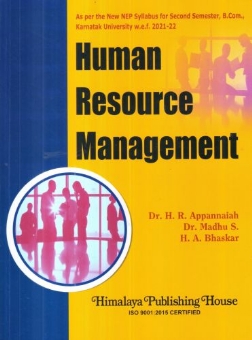Government of Karnataka has taken a meaningful decision to introduce New Education Policy (NEP) at degree level from 2020 onwards. It is a nice augury. Thanks to Government of Karnataka.
In the later part of 1980s very many innovative practices emerged on the corporate scene. Human Resources Development (HRD) is one discipline which was assumed as a vital activity to develop the business in an organisation. Since then all most all business houses considered HRD as a big factor for their success and established HRD wings in their organisations, formulated HRD policies and appointed HR personnel to implement these policies.
During this period, to give a clear picture of HRD, volumeneous literature was rolled out by publishers and written by great scholars. They tried and analysed the distinction between traditional practices which were called “Personnel Management” and “Human Resources Management (HRM)” as it is called today.
The literature available on HRM is extensive. The learners at the entry level may feel it difficult to understand various dimensions HRM. As this subject is introduced at degree level in various universities of Karnataka including Karnatak University, an attempt is made in this title to give an overview of HRM to be easily understood by these entry level students. The content covers the syllabus of Human Resource Management of second semester B.Com.
Human Resource Management is introduced as one of the subjects of study for second semester B.Com.
The title is subdivided into chapters throwing light on the main theme of HRM. Each chapter contains, learning objective, text, summary, graded review questions for better understanding of the subject and skill exercises. It is written in a direct style and is easy to understand.
Contents –
Unit – 1: Introduction
1. Human Resource Management
Unit – 2: Human Resource Planning
2. Human Resource Planning
3. Job analysis
4. Recruitment
5. Selection and Placement
Unit – 3: Training and Induction
6. Training and Induction
7. Promotion
8. Transfers and Separation
Unit – 4: Wage and Salary Administration
9. Wage and Salary Administration
Unit – 5: Performance Measurement
10. Performance Measurement







